#was trying to figure out noises for the sheikah pad ??
Text
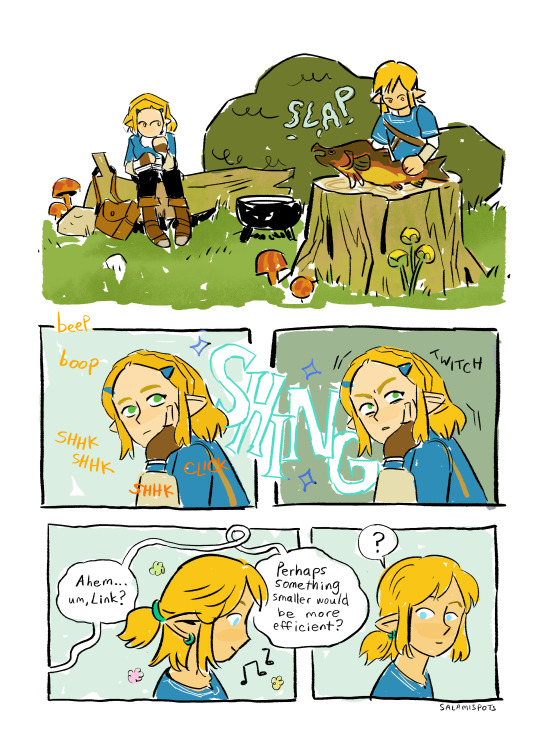
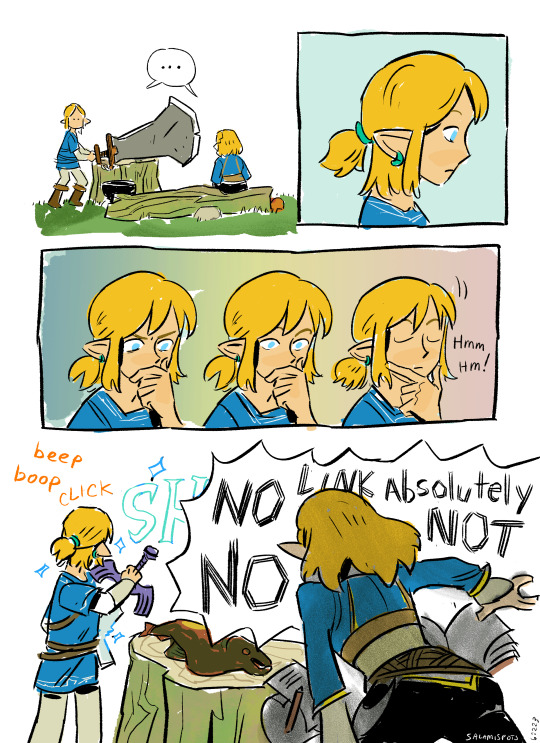
do you think Link's used the master sword to chop up veggies
#fandom feels#artists on tumblr#legend of zelda#takes place sometime after botw and before totk?#sequential#comics#went a little art feral today hsjdfjd#wheezing laughing#was trying to figure out noises for the sheikah pad ??
49K notes
·
View notes
Text
Review - The Legend of Zelda: Breath of the Wild
I never cared much for Zelda.
My gaming life began with the likes of Unreal and Quake, later exploring the more intriguing worlds of Morrowind and Final Fantasy X. I was late to the nostalgic craze of Mario, Metroid, Pokemon and the likes of Zelda itself, though my brother would always gush about them as the years went on, while I delved into the Elder Scrolls and Assassin’s Creed franchises as my typical “favorite games” listing.
Yet on a fateful evening outing with the family, I found myself with a brief demo of Breath of the Wild. Having a controller in my hand for the first time in probably a decade, I fell in love with the brief ten minutes I had with Link and his new world. It became an immediate Christmas wish, which was immediately fulfilled by my family within weeks of this request. My family was very excited that I wanted to try a Zelda game at all. So let’s get to it.

Link immediately awakes as much of a blank slate as I am, with nothing but amnesia and a female voice (quickly revealed to be Zelda herself) to guide him. We’re given something called a Sheikah Slate which looks like the lore’s own version of a Switch or iPad, and it basically serves as the game’s major MacGuffin that powers most of your abilities, map systems, and everything else. Apparently it’s an important device, as every major character and city leader immediately recognize it. From what I can understand in context, the device was in the possession of a team of champions that apparently died a hundred years prior. They fought against “Calamity Ganon”, the game’s major antagonist. You’re shown the castle off in the distance, but in the beginning Link is stuck on a massive plateau, and you need a wind glider to make it off alive. The old man helping you trades one after you learn the game’s four basic abilities, and the whole plateau serves as the tutorial.
We get a stasis ability (for locking objects in a time field, of which you can manipulate its momentum), two different bomb types (one that rolls and a square for better control depending on terrain), a cryogenic that allows you to create ice blocks over water (which I often use to cross rivers) and a magnet (which does exactly what you’d expect it to). Other than the open world Dark Souls-esque combat, they serve as the game’s primary mechanics and they’ll each be used to solve every puzzle and find every chest throughout the game.
Sadly the game neglects to teach you how to cook, and I had to resort to google for that. Seems like it’s an oversight, but it’s one of the more fun mechanics, throwing a bunch of your gatherings in a pot to eventually see what might happen. It encourages experimentation which I enjoy, but if all else fails, throwing five durians or bananas in a pot will go a long way in of itself.
The world opens up very quickly, as is usually advertised and mentioned in reviews. You can, in theory, immediately haul towards Calamity Ganon itself if you’re sneaky enough. I’m sure some YouTubers have already cleared it (quick research tells me it can be done in around 40-50 minutes), but more casual players would likely be crushed instantly. Instead you’re given several tasks, such as taming four Divine Beasts, massive mechanical creatures that roam Hyrule. They’re currently controlled by Ganon but you can retake them and they’ll all help during the final fight.
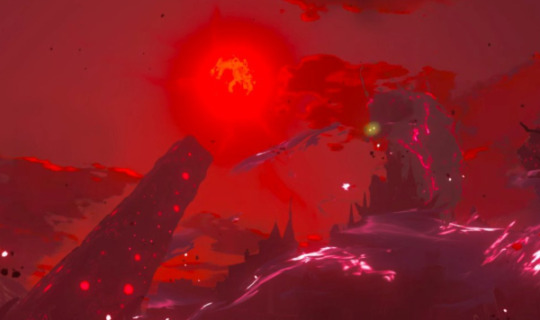
Beyond that, the world is ours. I admit I was feeling a bit dry of this genre after having around a thousand hours on Skyrim and a few hundred on the various Fallout’s, it’s a literal breath of fresh air as I found myself with a very simple goal: nab all the towers. In typical fashion more expected from the likes of Ubisoft, there are several towers to climb that unlock the maps of entire regions. I don’t mind this so much as it helps me get the lay of the land as well as a clear goal on the outset. I’d be very lost without them.

I have never been used to Zelda’s style of gaming but I have taken full advantage of the tools the game has given me. Chief of which being the open world itself. A vast majority of my gameplay has mostly been collecting different armor sets so that I can better face a variety of situations and weather conditions, and there’s a ton of gameplay to be had with that goal alone. In the first town that you are directed towards, there was a fairly expensive (for a starting player) stealth suit. I farmed some enemies which helped a lot in learning how to use a controller again, and the stealth bonus helped me nab some DLC armor which I used for a majority of the early to mid game, dozens of hours due to their helpful bonuses. While looking to afford that initial outfit, I ended up running into a shrine or two, and found a little tree pixie (called Koroks), which help to expand my inventory. The simple goal turned into its own micro-adventure and that’s something I very much appreciate about this game, though that does have a problem attached to it, which I’ll mention later.
If my readers know me, then you know I’m a stealth player. Hilariously there is a stealth mechanic on this game with a little noise meter next to the minimap but the game wasn’t really built for it. You can sneak in enemy camps while they sleep and steal their weapons but it’s not always an ideal tactic. There’s no clear indication of detection ranges so if you alert an enemy, all you’ll see is a question mark on their head and you have very little to do with that information. A bush does not conceal me, for example, for the simple fact that it’s not considered a ‘solid object’ by the game’s standards.
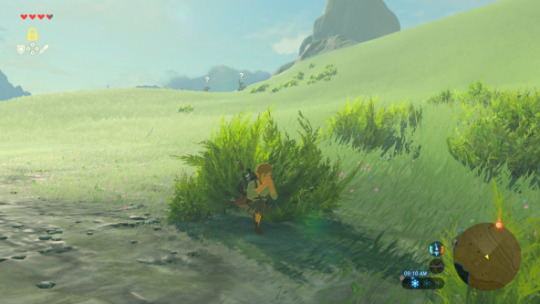
That does lead to another problem. The stealth mechanic is part of the alleged “play your way” that doesn’t always work. In terms of exploration, it might. There’s a lot you can do, like plugging balloons on bombs to make them float around, or throw metal weapons at enemies during a lightning storm. There’s so much to do with the world itself, but I found very little purpose in doing any of that except for water cooler conversations of “stuff I managed to do”. You CAN use a leaf weapon to blow the enemy off the cliff, but why bother if you can two-shot them or even use one of your infinite bombs to accomplish the same goal? So why would you want to waste to much time and potential health and food items finagling with the controls which you could just press Y a couple times and make the problem go away?
Not that I mind the combat over much. It has the usual fare of dodge, parry, block, flurry and a variety of charge attacks that can be kind of fun to use. I like how enemies often have their own large variety of weapons and that will change how they fight. A lizard with a bow will very often try to keep at a range from me, doing a backflip which causes me to sprint to close the gap, only for them to do it again when I try to take a swing. The same enemy type with a spear however, can be quite aggressive poking me at a range, but staying at just the right distance to piss me off. It’s a lot of fun, though.
I was rather afraid of puzzles upon my initial interest of this game, and has been a large part in keeping me away from the franchise. They tend to make me feel stupid if I take too long to solve them, but there is an extra level of “hurrah!” when I manage to figure out exactly what I need to do. There is another complaint attached to this however. As I completed a few dozen shrines (there’s something to the effect of 120 total) I noticed the rest usually require some gimmick to find or unlock. There’s one I’ve yet to discover because I need to be on a platform during a blood moon, the game’s respawn mechanic. The problem is, you can’t force those and they show up roughly every three hours of game time. So I imagine one of my last shrines will be me standing on that damn platform while I watch Youtube or play something else.

There’s also a few puzzles that demand use of the motion controls, which can be incredibly fickle and frustrating. Some are better than others but I found it to be more annoying than anything and I hope they minimize that mechanic in the future.
I’ve still had to resort to video guides. The Divine Beasts act as the game’s “major” dungeons preceding a boss fight, and to get to the boss, their entire body acts as a mobile puzzle. One of them has three cylinders in its midsection that can turn four times and there was far too much going on for my brain to handle. I managed to do the flying beast and water elephant on my own (with some pointers from my brother but not to a full on guide’s extent) but some of their innards are just a bit too complex to me.
The other complaint that I alluded to earlier, is world density. Yes, there’s a lot of nooks and crannies that will often hide a shrine, treasure, and a variety of weapons and upgrades. It can be profitable at times to simply pick a direction and start running, but this only works to a point. Between my position and my current goal (a tower, an armor piece, a town) there might be a single shrine, maybe two, on my way to find. There was however, a lot of pointless running. I heard a Let’s Player mention that they suspected the world was built first and was just filled it in with things later. Frankly, it shows. Yes it’s cute to find a stump or pile of leaves just slightly out of place, hiding a Korok creature but once you get back to running there’s a lot of open plains, fields, and vertical mountains to climb with very little to do in between and nothing to show for it except a padded hour count.
There was some controversy over the durability of weapons. I barely had much of a problem with it. Jim Sterling infamously bashed it which earned a fair amount of ire (which is not foreign to him) and even tried to negate the common compliment of “It forces you to adjust your strategy!” Still, I’m inclined to agree with that defense. Relying on a single type of weapon could make the combat stale pretty quickly, but there’s still some high level weapons I wish stuck around for longer. I did manage to acquire the Master Sword which is a permanent weapon that can run out of ‘energy’ and gives itself a ten minute cooldown but that’s very much a late-game item to acquire. Before that you’re basically stuck with a horde of guardian axes and knight’s claymores. I have run into the odd situation of having two or three weapons left but I discovered that shrines respawn during blood moons, so I simply found myself in those “Major Test of Strength” shrines which give you a single enemy with predictable attack pattern, serving as a miniature boss fight to help you get used to the combat mechanics. They drop two or three fairly decent weapons and a lot can be done with them. It’s just another thing to do in a fairly enjoyable game.
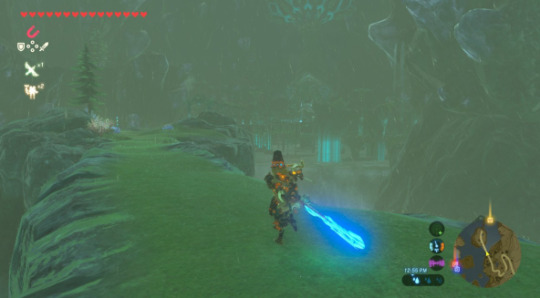
I also wanted to compliment the game’s way of leveling itself up. It’s essentially tied to story progress and Divine Beast slaying. Each mob has a few different variations, color coded for your convenience. Usually starting brown and going up to blue, then black and others. Each harder than the last, usually just wielding more powerful weapons and having a fair amount of hitpoints. Since a lot of my gameplay was exploring, getting towers and collecting armor, the game never advanced too quickly for me. I’d have a few scattered harrowing fights but the game did a good job of making sure I could take my time with it. The early game throws a few blue Moblins at you which are fully capable of one-shotting your measly four hearts, but I feel that was a sort of observation test for a player to absorb. It forces you to think about what your facing, change weapons and strategy. In practice, it just made me terrified of the color blue for a while.
The game only starts throwing the tougher enemies at you once you defeat the bosses accompanying the four Divine Beasts. As the game’s major dungeons, completing them is often a test of everything you’ve learned and is as good a marker as any for “this player is ready for tougher enemies”. I am very pleased with this kind of development, as my first ten hours was spent killing jello blobs and bats for their parts so I could sell them and afford more arrows. The game never really went “Okay, time for the tough stuff” when I’m still using a wooden goblin spear.
I don’t expect I would get much out of the game’s Master Mode, serving as a sort of New Game Plus except without anything you’ve earned, and is basically just a Hard Mode. The DLC has plenty more to offer which I will explore eventually but it sounds difficult, and I’ve never been any kind of Hard Mode player. Still, I was afraid of this game and I’ve been doing just fine in it so the DLC may not be as intimidating as I think.
In conclusion, I’m having a lot of fun in it. It may not have lasting replayability (though I can think of a few ‘corrections’ to my early game to help things along) and after so long, I find there’s very little to actually find as I climb snowy mountains and angrily wait for a thunderstorm to pass. I’m far from done with it though, not while I still have goals in mind. I do have my sights on beating this one, and for a newer-aged millennial gamer, finding a Zelda game that I actually enjoy is an accomplishment on their part. I understand BOTW is a major genre shift for the franchise, and I hope they continue the trend if they want me as a returning customer. Until then, this game is very, very good.
5 notes
·
View notes